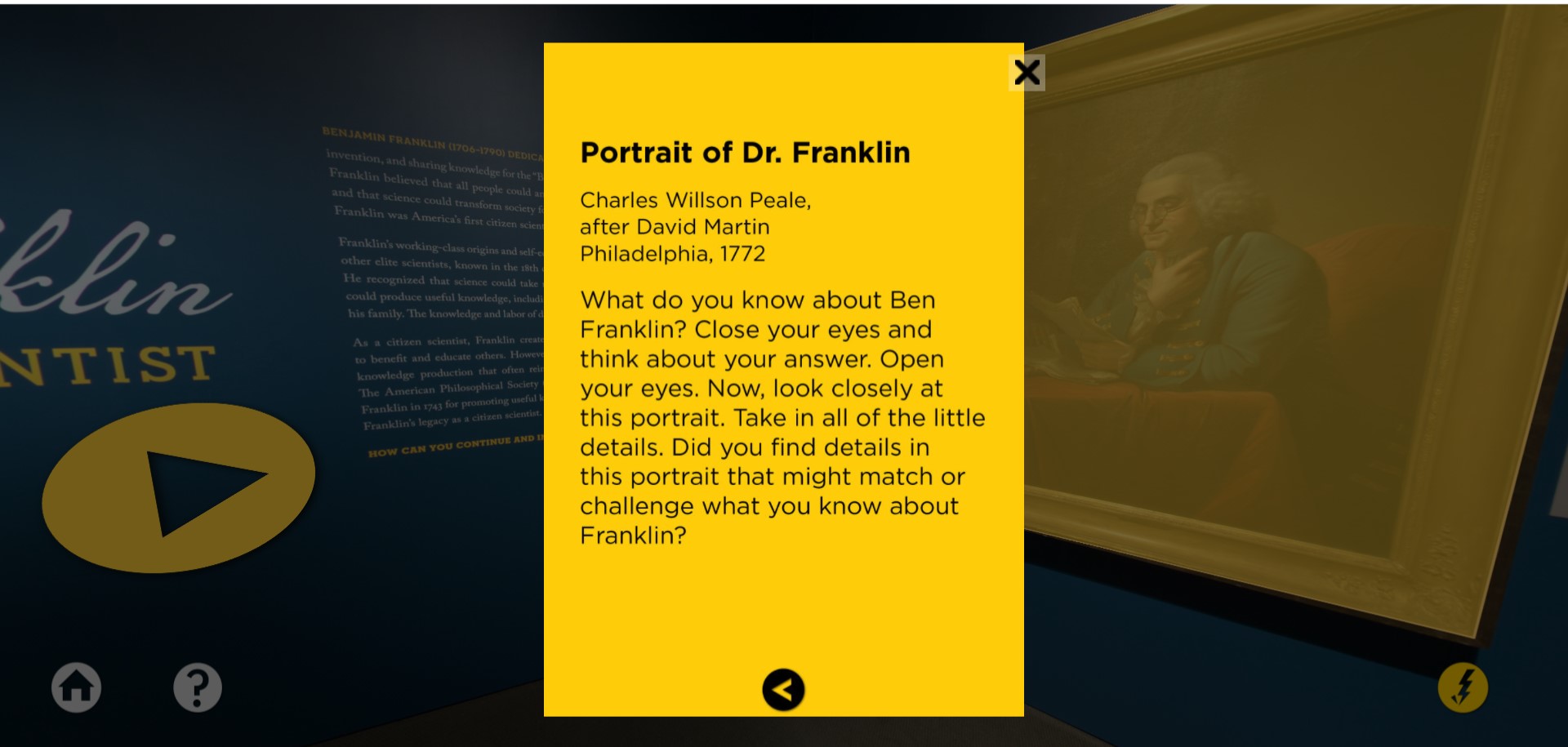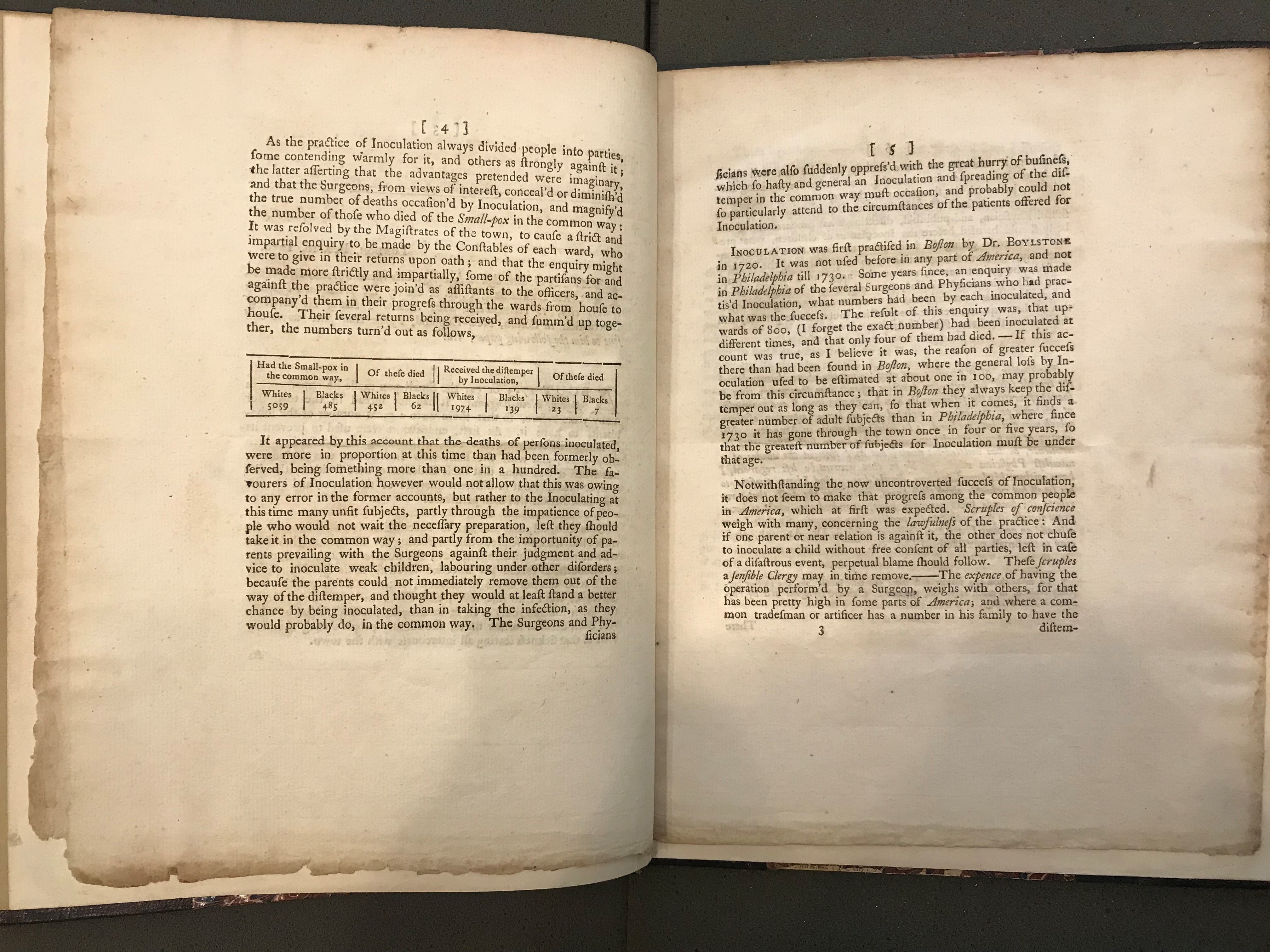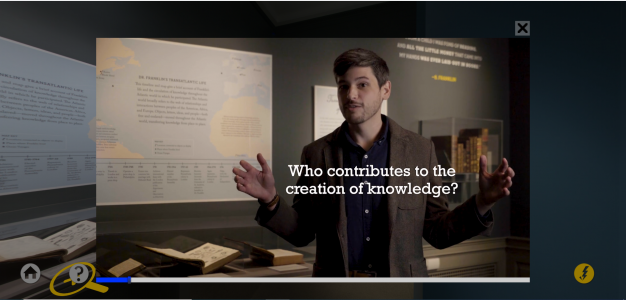Behind-the-Scenes of Dr. Franklin, Citizen Scientist Virtual Youth Tour
Many in the museum field have created virtual tours of exhibitions. The APS was delighted to receive funding from the National Endowment for the Humanities to do just that with the help of wonderful professionals from Greenhouse Media. In the process of creating virtual tours of Dr. Franklin, Citizen Scientist (an exhibition that was initially slated to open to the public in April 2020), we wanted to be sure that both children and adults could be engaged equally. In either a moment of Franklin-esque genius or Franklin-esque overworking, we decided to achieve that aim by creating two separate tours: one for each of those audiences. As the Head of Education Programs, I was tasked with plotting out the children’s version and lending a helping hand to my colleagues working on the adult one. (Of course, this also required the supervision of the Associate Director for Collections and Exhibitions, assistance of the Museum Education Coordinator, and the help of countless others.) So, what did the creation of this tour look like?
For this exhibition, the tours provide information through both video and label content . It’s all too easy to think that a children’s tour is a less complex version of an adult one. That thought could not be farther from the truth!

First, we had to decide what on earth we meant by “children.” Defining audiences is core to museum education practice, so we took this part seriously. Comparing the scientific and historical concepts highlighted in the exhibition to state standards and a variety of curricula, we decided that children in grades 6 through 8 were the right audience. The exhibition’s content, overall, fits nicely with that age range in both a real world and school-based context.
Next, we had to decide what to highlight. An exhibition tour always requires choice—we don’t have the luxury of talking about every object or concept! Now that we had our audience figured out, we could go back through and construct a tour narrative using those standards and curricula. When you go through the tour, you’ll notice that four of the five videos have guiding questions. The questions provided a framework for our choices on object spotlights.
Once the objects and general narrative were solidified, we worked on how to talk about key concepts. This is usually where that thought of a kids’ version being a less complex version creeps back in. However, we know that a kids’ version takes similar concepts and phrases as an adult version but narrows them, makes them more specific, and painstakingly chooses words to match our audience’s level of knowledge. For example, the exhibition includes a pamphlet entitled Some account of the success of inoculation for the small-pox in England and America, in which Franklin discussed the importance of inoculations. An image of that pamphlet is included below. This object brings up conversations and questions on both vaccines/inoculations and the power dynamics between white scientists and enslaved peoples in knowledge production. These are two large and complex topics that an adult might be able to work out if placed together. For the kids’ tour, though, we had to look at the larger framework of the tour and figure out which specific message this pamphlet should convey in relation to the other highlighted objects.

The almost final part of the equation was filming. There’s an extra something added when professionals film a tour compared to giving a “regular” tour in person!
Throughout this process, we kept the learner in mind while also grappling with contemporary issues. How do we address Franklin’s actions regarding slavery amidst movements like Black Lives Matter? How do we grapple with the topic of vaccines? And how do we honor, counter, and/or boost the knowledge these learners already have? We made sure that we enjoyed the process from start to finish—enjoying your work and being genuine always comes across in a tour! How do my hands gesture like that while simultaneously looking like they are detached from my wrists?
Well, I guess you’ll have to check out the virtual exhibition to find out!
This project has been made possible in part by a major grant from the National Endowment for the Humanities: Coronavirus Aid, Relief, and Economic Security Act.
Any views, findings, conclusions, or recommendations expressed in this blog do not necessarily represent those of the National Endowment for the Humanities.

